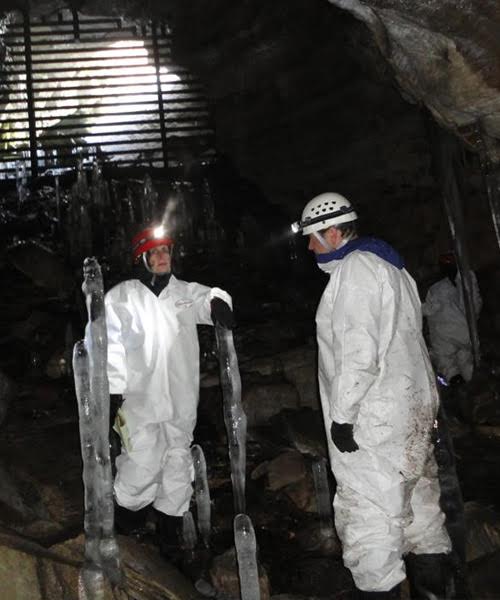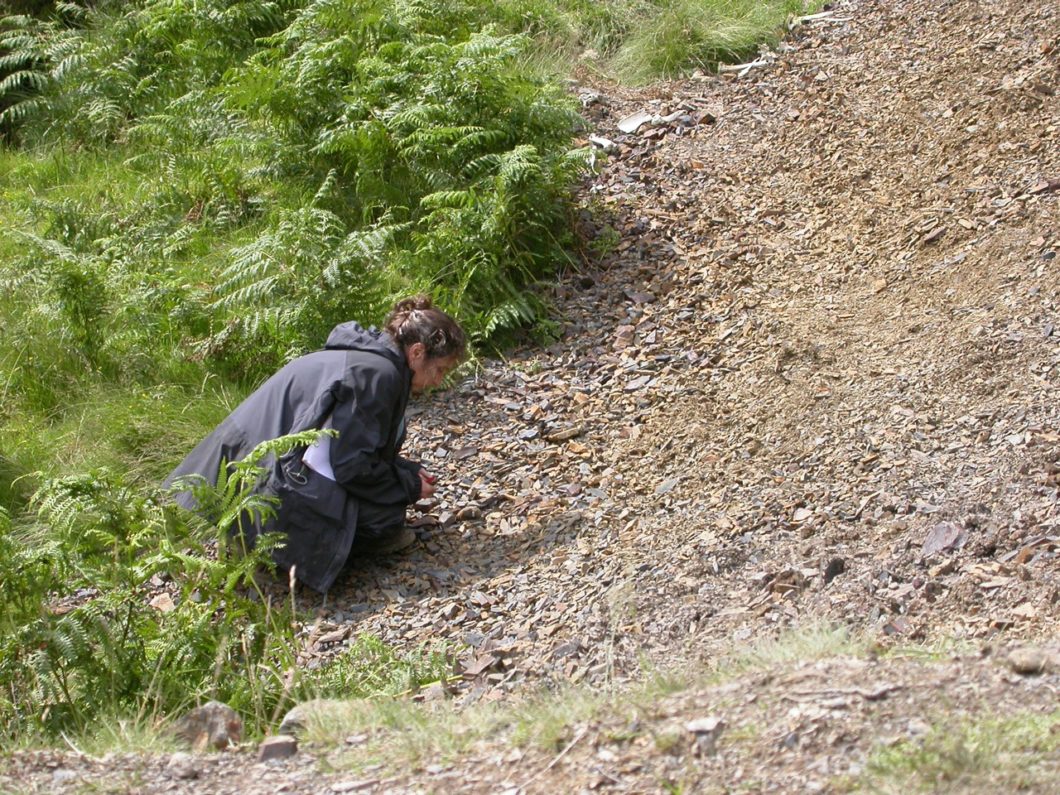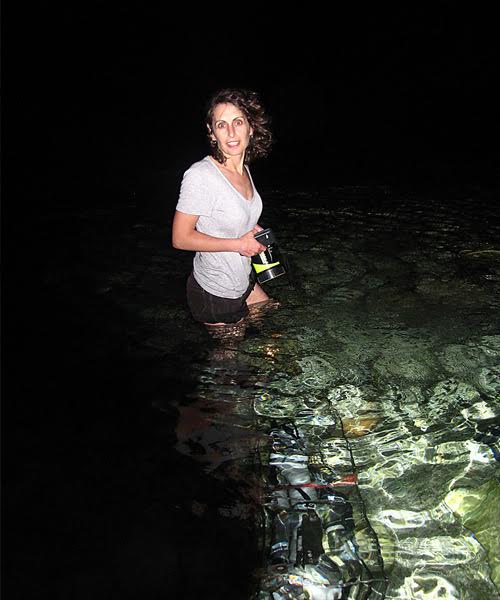
In her Pulitzer Prize–winning 2014 book The Sixth Extinction: An Unnatural History, Elizabeth Kolbert details the evidence that human activity is causing what scientists call the sixth mass extinction—the loss of as many as half of all living species on Earth. Kolbert traces the intellectual history of how scientists came to understand extinction and woke up to the impact we are having on the planet’s ecosystems. That prospect is decidedly bad news—and bad news fascinates readers, says Kolbert. “If extinction is a morbid topic, mass extinction is, well, massively so,” she writes in the book’s prologue. She brings the morbid subject to life with fascinating descriptions of creatures and places across the globe—and with a good dose of humor. Rather than causing her to feel overcome by the horror of one possible future, writing the book left Kolbert wondering: Will we face up to what we are doing? And what’s next?
She explores what’s next in her article “Unnatural Selection,” which appeared in the April 18, 2016 issue of The New Yorker. In the piece, she describes scientists’ increasingly radical efforts to boost nature’s capacity for survival, focusing on two organisms: coral and the American chestnut tree. Christina Selby recently spoke with Kolbert about reporting bad news, captivating readers with tales of nature, and turning magazine articles into books. (This interview has been edited for length and clarity.)
Scientists use the term “sixth extinction” to express the idea that life on Earth is on the brink of cataclysm, on a scale seen only five times before in the planet’s history. Where did the idea for your book The Sixth Extinction come from?
In a sense it grew out of the realization after my last book, Field Notes from a Catastrophe, that climate change is only one part of a bigger story about how we are changing the planet. In another way, it grew out of the amphibian crisis, a story I was following. Many species of amphibians are suffering devastating population declines or extinction because of a chytrid fungus thought to be spread by human transportation, a calamity I describe in the first chapter of The Sixth Extinction.
The first few chapters of the book trace the intellectual discovery of extinction, and the following chapters each focus on a species that exemplifies a way in which extinction is unfolding and how humans have caused or come to understand these events. How did you decide upon the central characters—the animals or ecosystems—that would frame each chapter?
I could’ve chosen a lot of different stories and a lot of different animals; the basic thrust of this narrative would have been the same. There’s a fair amount of happenstance that went into the ones I chose. Part of it was slotting things into the narrative. I was looking to make different points vivid to people, and different experiments or animals seemed to do that. I was looking for organisms and things that were exemplary and illustrative. For example, [chapter one is on] frogs: I did a New Yorker piece on frogs and the amphibian crisis—that’s how we got to frogs. The chapter exemplifies an extinction caused by the introduction of an invasive species.
The second chapter is about the mastodon; [it] could have been any creature that went extinct in the megafauna extinction, but the mastodon was the animal that was first postulated to go extinct. When you look at the intellectual history of extinction, that was a very important creature. That seemed like a logical creature to explain how scientists “discovered” extinction.
What was most challenging about writing the book?
It was very painful for me to write that book. I thought it was going to do me in, at points. It just wasn’t coming together. A lot of it was just the usual problems of a nonfiction writer—getting the stories to line up as a narrative, as opposed to a series of discrete stories. Some of the chapters had been written for magazines and had to be rewritten for a book. It contains different time scales—one is geological history, one is intellectual history, and one is the present tense. How do you get those timelines to line up without going backwards and forwards in time? I ended up mostly following the intellectual-history line. So the first few chapters move from the early 18th century into the late 20th century. The other timelines are subordinated to that. That took me a long time to figure out.

You traveled far and wide to report the stories in the book and the article. What was the biggest challenge in reporting from the field?
The most challenging thing was reporting underwater. That is the hardest thing—when you see these amazing things underwater, but what can you do? You can’t take notes. When I was in Hawaii snorkeling, the scientists had these plastic slates with a special pencil to keep track of their experiments, that you can write on underwater. They loaned me one of those, so I took all my notes on my plastic tablet and transcribed it when I got back to shore.
In the prologue of the book, you describe the early history of a species—which could be any species—and name it “human” only when the species begins altering the planet on a global scale and causing extinction of other species, as only we have done. It gives the story a fictional tone and captivates the reader with this mythical species. How did you decide to write it that way?
The prologue is an homage to Rachel Carson and the first chapter of Silent Spring. She is definitely a hero of mine. She is a hero of everyone. The first sentence of my book— “Beginnings, it’s said, are apt to be shadowy”—is actually a reference to her book The Sea Around Us, which is about the oceans.
What I really wanted to do with the book was impress upon people how unusual the time we live in is and how high the stakes are. I don’t think people appreciate that.
The tone of the prologue of The Sixth Extinction, the fabular quality of it, is based on a chapter in Silent Spring titled “A Fable for Tomorrow.” It’s about a mythical town, “a town in the heart of America.” Carson recounts several examples of how DDT and other persistent chemical pesticides damaged humans and nature in this mythical town. She tells you at the end of the chapter that these things did not all happen in one place, but they happened in several towns across the U.S. at different times. That’s the point of the chapter: The story could have happened anywhere. My opening, with its somewhat mythical quality, was an attempt to mimic the tone of hers.
Bill McKibben wrote in his book American Earth that “each advance in environmental practice” has been “preceded by a great book.” He uses Carson’s Silent Spring as an example of that. Did you write this book hoping it would have that kind of impact?
You obviously write hoping to have an impact. If you are writing a nonfiction book, you can write an argument or a polemic. At the end of Silent Spring, there’s a pretty detailed prescription for what we should be doing. In this case I hoped the impact would be, as trite or as banal as it sounds, increased awareness. I don’t have a prescription. I don’t have a set of bills I think should be passed. I am not a scientist. I don’t claim to be the person who is going to solve the sixth extinction. It’s just not the kind of book that a journalist could write about such an issue. What I really wanted to do with the book was impress upon people how unusual the time we live in is and how high the stakes are. I don’t think people appreciate that.

What was your reaction when you won the Pulitzer Prize for The Sixth Extinction?
I was amazed. I was not expecting it. I was actually in Germany when [the Pulitzers] were announced, and I was going to bed. I didn’t even know the Pulitzers were that day. It was a high point of my life and career, and I was really thrilled.
I do think a lot of it was the subject. This is a huge subject. Many people have tried to draw attention to it—I’m certainly not the first. I think part of it was a realization on the part of the judges that this topic deserves more attention than it’s getting right now.
Your recent New Yorker article “Unnatural Selection” picks up where The Sixth Extinction leaves off, in a way, and dives into questions about what can be done to save ecosystems on the brink of extinction. You look at radical attempts by scientists to prevent species loss through what’s called “assisted evolution.” The story focuses, first, on the ongoing devastation of the world’s coral reefs and on marine biologist Ruth Gates’s yet-unproven attempt to create “super corals” that can withstand the effects of warming oceans. Then you pivot to a discussion of efforts to resurrect the American chestnut tree, which suffered a devastating blight nearly a century ago and barely exists anymore. Why did you decide to pair these two stories?
I am very interested, as all journalists are, in this question: Where do we go from here? That is a huge question and people have many different answers to it. Assisted evolution seems to be one of the things that happens next. The idea was obviously interesting to a lot of reporters, because it got a spate of coverage in the moment the Ocean Challenge award Ruth got was announced. I saw those [stories] and was intrigued.
I then went out to Hawaii and spent some time with Ruth Gates and her crew. When I got home and was writing [the story], I felt like that project is really very much in its early stages. They hadn’t even gone through a breeding season—corals only breed in the summer in Hawaii. I felt like the story was a little bit too thin.
How did you decide how to compensate for that, to create a more complete story?
In a paper that Ruth wrote with her colleague in Australia, they talk about other comparable [assisted-evolution] efforts, and they mention the chestnut. Several people are working to try to revive the American chestnut, but the ones that are doing assisted evolution using genetic modification were just a couple hours from my home in Williamstown, Massachusetts, so I thought I would go over and see them. That’s how that came together.
Twice in “Unnatural Selection,” you write that you were just “hanging around” when Gates invited you to join her in some activity—once, it was looking at coral polyps under a laser scanning confocal microscope, and another time, it was donning a wetsuit and visiting some coral reefs in Kaneohu Bay, off the coast of Oahu. Your phrasing sounds distinctly passive. Were you not pushing her to let you peer into microscopes and go out in the field with her?
Ruth definitely had her things to do. I would show up in the morning and leave in the evening. She tried to keep me entertained to a certain extent but I was also just hanging around. January wasn’t the best time of year to be there, as there wasn’t much going on. It would have been much better in summer, when things start happening in Hawaii. Some of the corals will start reproducing and [Gates’s] real experiments will start.

How big an issue was the timing for you?
It’s one of the exigencies of journalism and it was not the optimal situation. I try to go on reporting trips when things are happening, but deadlines are complicated and things that only happen once a year are hard to plan around. For the book, a couple of times I tagged along on an expedition. Sometimes people kindly staged expeditions for me, but I had to work around their schedules. Some things took a year to schedule properly. You have a lot more time when it’s your own book. Or maybe you don’t really—my book was way overdue.
One thing I enjoy about your stories is how you include fascinating information about the creatures or ecosystems in question—coral that uses tiny nets of mucus to catch prey, for example. What’s your strategy to find and include these in your stories?
Every creature you encounter has its own unique survival strategy, honed over many millennia and in some cases millions of years, depending upon how old it is. Every creature has an interesting story to tell. Corals for example: I could write endlessly about the different species of coral and their many different strategies for feeding and reproducing. Any time I am out with someone I usually learn something really interesting about whatever we are looking at—way more than can fit into any one article, unfortunately.
The narrative frame that I am hoping to convey is, “There’s going to be bad news here, but it’s also going to be interesting.”
Environmental stories are so often centered on bad news—species on the precipice, ecosystems irreversibly degraded, reversals of environmental safeguards, conservation projects whose chances of success are uncertain at best. What do you do to try to keep readers from getting overwhelmed or depressed by all the grim news?
People are attracted to bad news—I don’t think that should be underestimated. The fact is we read depressing stories all the time—we read about Syria, war, Zika. It’s really not unique to environmental work. The mantra or slogan of local news is, “If it bleeds, it leads.” The narrative frame that I am hoping to convey is, “There’s going to be bad news here, but it’s also going to be interesting.” In “Unnatural Selection,” I began with Ruth’s story of how she became interested in marine science. People who are working in these fields often have interesting stories about how they came to certain thoughts and realizations. So I try to get you to read the beginning just because it’s an interesting personal story. But I am also not hiding the bad news—pretty high up in the story is a snapshot of how reefs are dying.
After reporting these stories, are you an optimist about the state of the world and our response to the prospect of a sixth mass extinction?
I’m not an optimistic person, as anyone who knows me will tell you. I do see small glimmers of hope. I do see increased awareness about certain issues, but I don’t see anything on a scale that is at all commensurate with the huge issues. I don’t see easy ways out of a lot of these problems in an interconnected world of 7.4 billion people—very quickly going to 8 billion people. I’ve never seen anyone lay out how this is going to be solved. I don’t think you can even use the word solved. Ameliorated is perhaps a better word.
What drives you to continue to tell these “massively morbid” stories about extinction, as you call them in The Sixth Extinction, when you feel the situation may be hopeless?
Sheer perversity. Really, at this point that’s really what it is, by gum. No grand ethical calculation, more just like: This is amazing; it’s happening right now, and what else should I be writing about?

Christina Selby is a TON fellow sponsored by the Burroughs Wellcome Fund. She is a freelance writer and amateur photographer based in Santa Fe, New Mexico. She writes about conservation science, biodiversity, pollinators, and sustainable development. Her work has appeared in Lowestoft Chronicle, Green Money Journal, Mother Earth Living, and elsewhere. You can find her online at The Unfolding Earth, a blog featuring photography and environmental writing on global biodiversity hotspots; her website; or say hi on Twitter @christinaselby.


